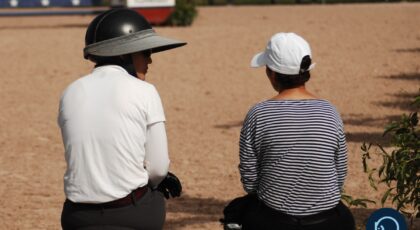My plan was to give a brief explanation as to how the word mare got tangled up with the word night to bring us the unpleasant experience of a nightmare.
This was supposed to be easy and short, but it has turned into a mare’s nest.
A mare’s nest, by the way, is a deliberate hoax or a false discovery, or so says my Penguin Dictionary. I hadn’t heard this term until today, but I suspect I’m going to start tossing the phrase around.
We will start at the beginning which is short and simple. The use of the word night is just as it seems because it means nocturnal. Perfect. Makes sense. Moving on.
It’s the word mare that is throwing me for a loop. I suppose because I’m a horse person I just assumed nightmares had something to do with female horses, but I was wrong, as always. So, to avoid confusion, I’m going to clarify the meaning of mare right out of the gate, because I can assure you this will get a little convoluted otherwise.
Three Meanings

Mare #1 – A female equine. The word is derived from all sorts of different languages, such as Old Frisian and Old Dutch merrie, Old English, meare and Proto-Germanic marhijo, meaning female horse.
Mare #2 – Or maria in the plural comes from Latin meaning sea. This definition is often applied to the dark areas of the moon and Mars because Galileo thought that the dark spot on the moon was a sea. Can’t really blame him given the technology he had to work with back in the 1500 and 1600s.
The Mare Tranquillitatis, or the Sea of Tranquility, is where Apollo 11 landed and where humans first stepped foot on the moon. Maremma, as another example, is a coastal region in Italy, so named as a maremme is an area of marshland near a sea.
Mare #3 – This version of the word stems from various places such as Old High German mara meaning incubus and Croatian mora meaning nightmare. It is this version of the word that’s been attached to night. Some of the other meanings are incubus, goblin, monster, pressure, trample or stamp, rub away, female night spirit, death, ghost, and revenant.
This definition of the word is all but lost to the English language except in the word nightmare.
Nightmare
If we go back 700 years or so, a nightmare was an evil spirit, most often thought to be female, afflicting people in their sleep.
In super broad terms a mare was a goblin, incubus or spirit that came to you in your sleep and sat on your chest which gave you the feeling of suffocation and subsequently horrible dreams and a dreadful sleep. It’s of little wonder.
I suspect it was probably more of a sleep apnea issue than a goblin issue. Nevertheless.
Folklore
It’s because we’ve lost the third definition of mare in the English language that horses are often attached to nightmares. And the best place to find horses relating to unpleasant dreams is folklore. I enter this realm somewhat reluctantly fearing it’ll be a rabbit hole waiting to suck me in. So, I’ll be glazing over this in the interest of simplicity whilst placating curiosity.
The information you are about to receive comes from a smattering of different websites and because it’s folklore it boils down to hearsay and individual beliefs and may prove somewhat contradictory, which is a nightmare for me. This is my disclaimer since I’m a source-driven human.
Another name for nightmare is hag-ridden which only furthers the idea that horses and apparently unattractive women are a part of bad dreams.
There was some belief amongst certain cultures that a nightmare spirit would take your horse out for a frenzied night ride. When you got to the barn the following morning to feed, you were presented with an exhausted horse covered in sweat and with a tangled mane.

This tangled mane extended to humans as well if they had been hag-ridden and was referred to as mare-locks, mare-braids or mare-tangles.
Since a nightmare was often thought to be a female spirit some cultures believed they were witches who shape-shifted into animal forms such as cats and horses.
And finally, due to the misunderstanding of the word mare, it was once thought that if you had a bad dream, it was because you had been out riding a demonic horse, instead of sleeping. Which would be horrible.
Not Folklore
The painting The Nightmare, created by Henry Fuseli in 1781 is a little disturbing but is clearly his depiction of a nightmare.
The focal point of the painting, which is also this article’s feature image, is a woman sleeping with an incubus sitting on her chest. The curious part is the horse, which is creepy, amongst the curtains. Having now read many different sources behind the meaning of this painting, no one seems to have an interpretation as to what the horse is even doing there. And so, we are none the wiser. It would be easy to surmise it has something to do with the word mare in relation to horses. But if I learned anything from my Gothic English class in university, it’s that there is always a deeper meaning to everything you see and read when it comes to art.
We will have to draw our own conclusions here, I feel.
Well…
There you have it. Nightmares have nothing to do with horses, but people seem to want horses involved in some way, so I say we can believe whatever we like at this point.


 February 7, 2023
February 7, 2023 

























